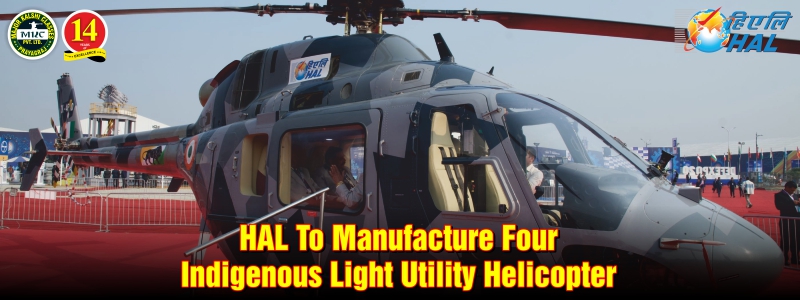HAL to manufacture four indigenous LUH
Introduction–
Table of Contents
In a respond to a question asked in the Rajya Sabha, Minister of state for Defence Shri Ajay Bhatt has said that Hindustan Aeronautical Limited – HAL will manufacture four light utility helicopters (LUH’s) under limited series of production till the year 2022-23.
On Monday Central Government also informed that government owned huge aerospace company will manufacture another eight light utility helicopter by 2023-24.
Out of the Initial batch of the four helicopters, two will be allotted to Indian army and other remaining two will go for the Indian Air Force.
The two forces will get the four LUHs each from the second batch of the limited series production.
Replacement of aircraft fleet of the defence forces including Cheetah and Chetak helicopters is reviewed from time to time keeping in view the operational requirements.
This is a continuous process. The Government has planned replacement of these helicopters with Naval Utility Helicopter, indigenous Light Utility Helicopter
Features of Light Utility Helicopters:
The Light Utility Helicopter is equipped with 3-tonne class highly agile new generation light helicopter.
According to HAL, it possesses a cruise speed of 235 km/h maximum speed of 260 km/h service ceiling of up to 6.5 km a range of 350 km with maximum take-off weight of 3.12 tonne and an empty weight of 1.91 tonne.
The LUH will be capable of accommodating a maximum of two pilots and six passengers, all of which shall be seated on crash-worthy seats externally
It is capable of carrying cargoes of up to 1 tonne under-slung. LUH with glass cockpit will be able to undertake various missions, including Emergency medical services (EMS) Troop transport Utility Search and Rescue (S&R) VVIP Aerial reconnaissance and surveillance missions.
LUH is powered by a single 750 KW rated Shakti-1U turboshaft engine derived from Safran Ardide co-developed by HAL and Turbomeca. It supports dual channel Full Authority Digital Engine Control (FADEC) system along with backup fuel control system.
The helicopter will be equipped with a glass cockpit featuring a Smart Cockpit Display System (SCDS) along with a skid-based landing gear arrangement.
AatmaNirbhar Bharat Boost:
In order to boost AatmaNirbhar programme India has embargo number of items from the foreign markets and promoted the indigenous equipments and system.
In the similar lines the SRIJAN Portal has developed and launched to promote indigenization in August 2020.
As on date 10940 items, which were earlier imported, have been displayed on the portal for indigenization.
The Indian industry has shown interest for indigenization of 2880 displayed items so far. DPSUs interact with these industries to facilitate indigenization of the items as per extant procedures.
A big step to promote the indigenization in the defence sector in the Indian Defence Industry to manufacture these items using own design and development capabilities to meet the requirements of the Indian Armed Forces.
The lists include some of the important technology weaponry like artillery guns, assault rifles, corvettes, sonar systems, transport aircrafts light combat helicopters, radars, wheeled armoured platform, rockets, bombs, armoured command post vehicle, armoured dozor and many other items to fulfill the needs of our Defence Service.
Latest Induction:
Light Combat Aircraft (LCA) – TEJAS :
At present, the LCA Tejas is integrated with an imported engine. However, in future, it is proposed to develop indigenous engines for powering our own aircraft such as LCA variants and AMCA (Advanced Medium Combat Aircraft) in association with an international engine house.
Advanced Light Helicopter – DHRUV (MK III):
- The indigenously designed and developed Advanced Light Helicopter (ALH-DHRUV) is a twin engine, multi-role, multi-mission new generation helicopter in the 5.5 ton weight class.
- It is a multi-role chopper with the Shakti engine manufactured by Hindustan Aeronautics Limited (HAL)
Conclusion:
Self-reliance in defence manufacturing is a crucial component of effective defence capability and to maintain national sovereignty and achieve military superiority.
The attainment of this will ensure strategic independence, cost-effective defence equipment and may lead to saving on defence import bill, which can subsequently finance the physical and social infrastructure.
For more blogs and notification subscribe to blog.majorkalshiclasses.com










